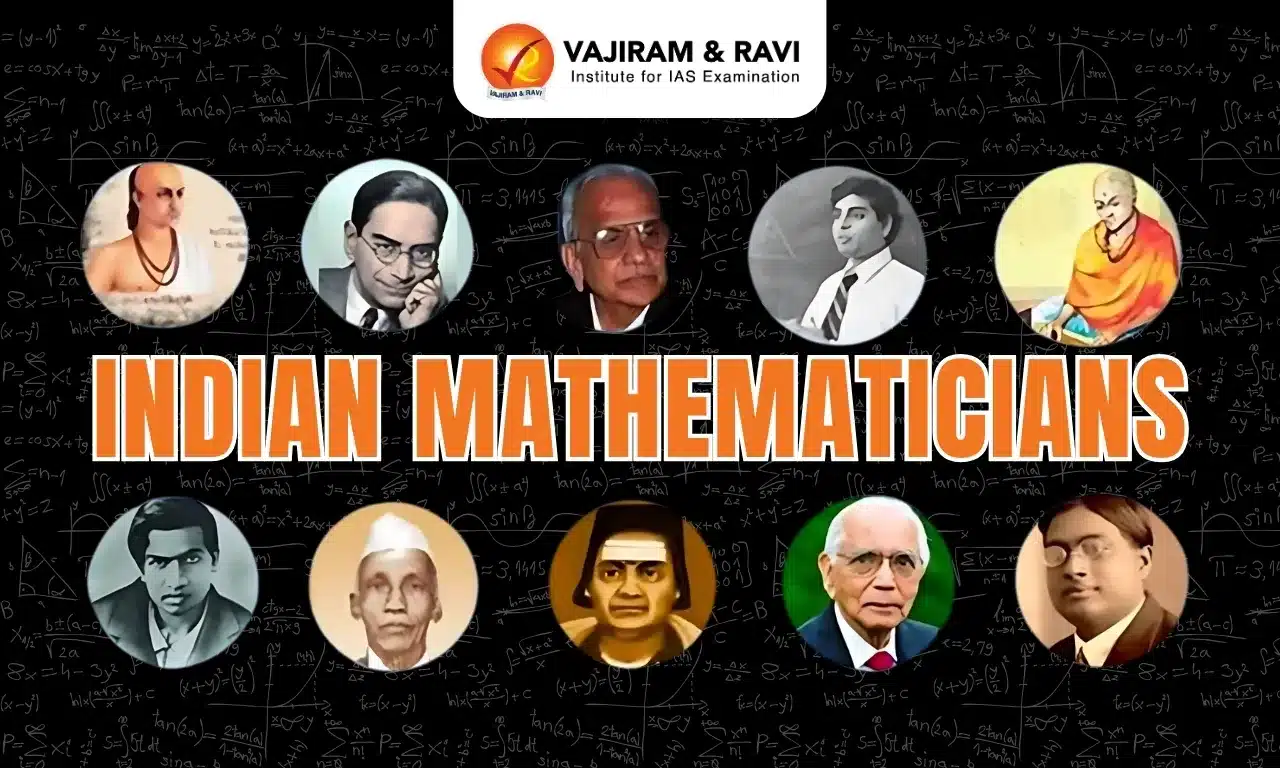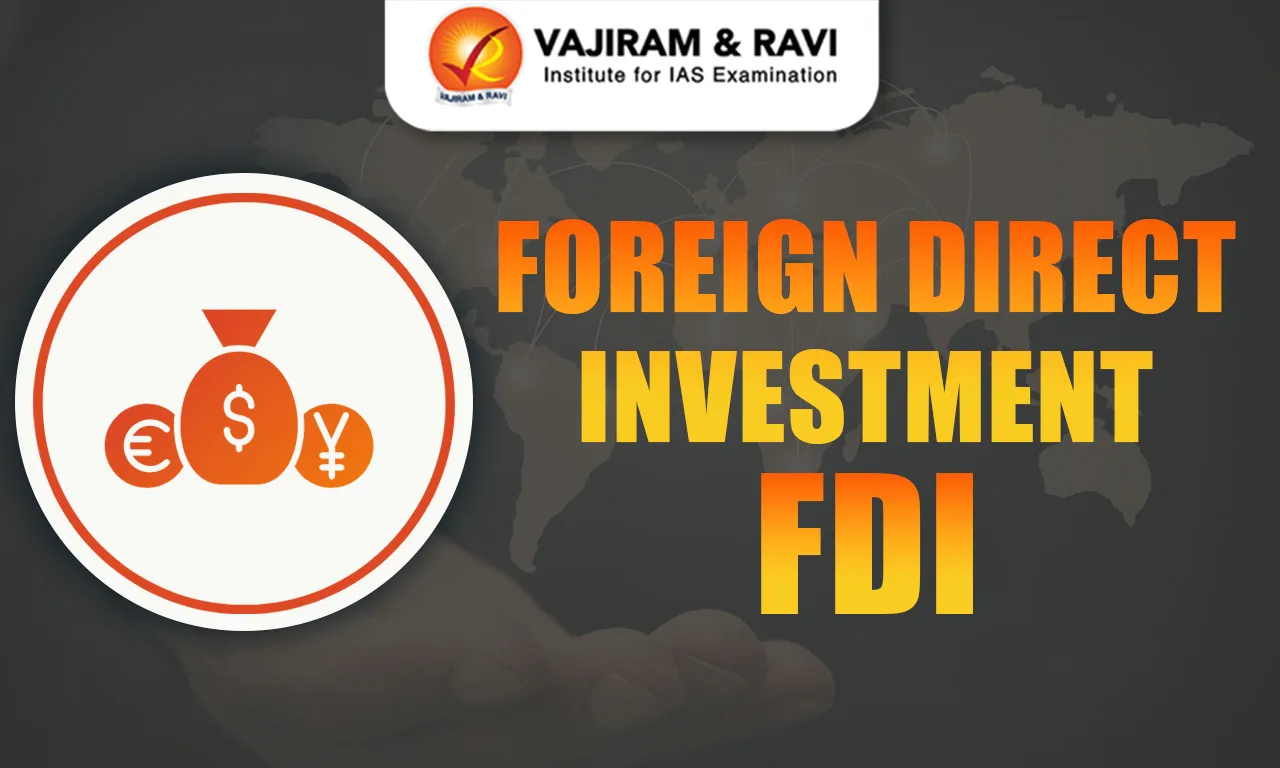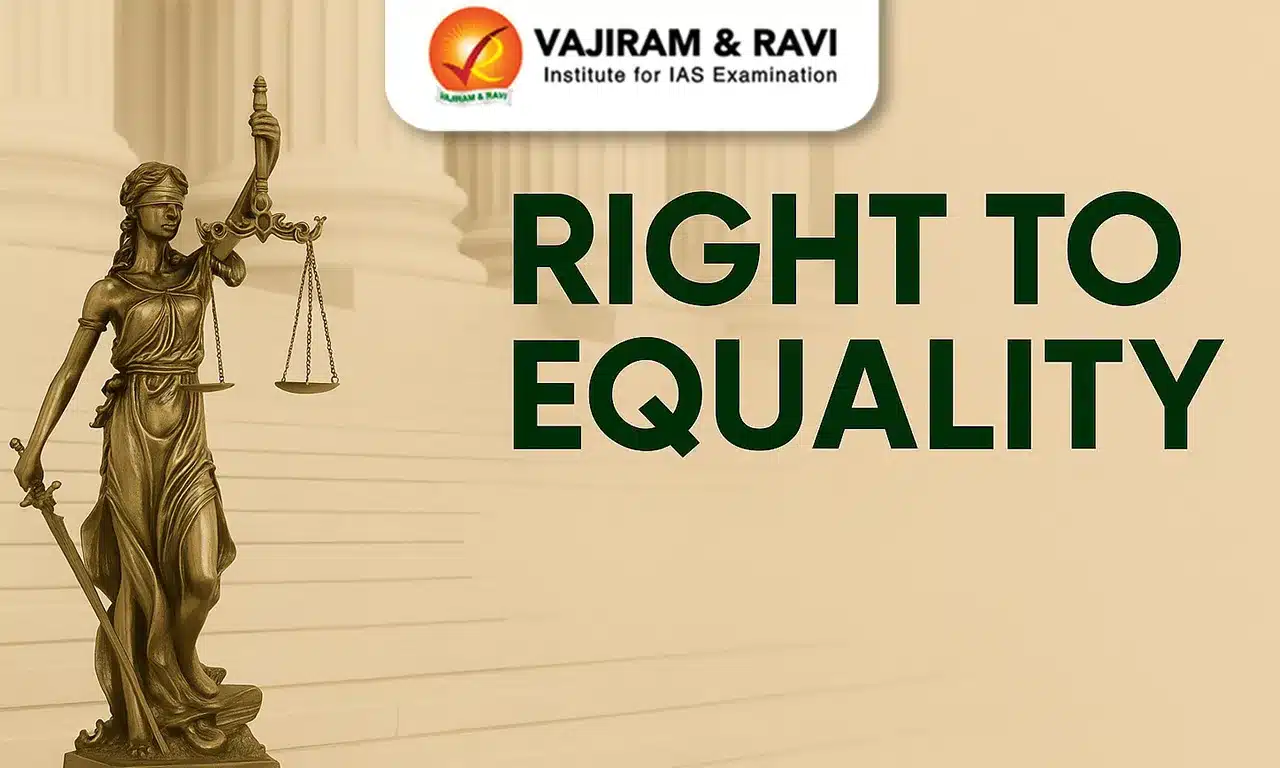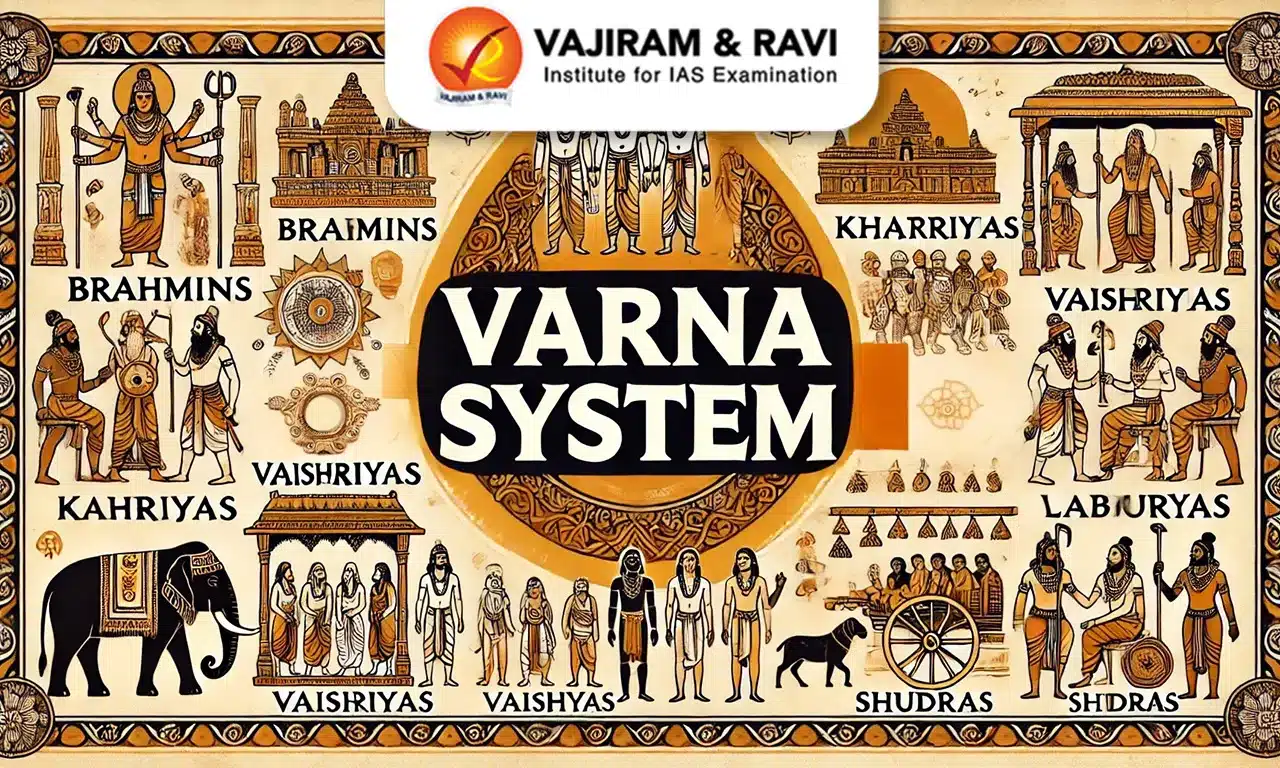India’s contributions to pathbreaking discoveries made by mathematics date back to ancient and medieval times. From formulating geometric principles in the ancient era to pioneering concepts of calculus centuries before Europe, Indian mathematicians like Ramanujan made profound contributions to mathematical analysis in the modern period.
Contemporary Indian mathematicians are expanding frontiers in diverse domains, garnering global recognition, exploring the enduring legacy and monumental contributions of mathematicians from India across different eras, and highlighting their timeless influence on the evolution of mathematical knowledge.
List of Famous Indian Mathematicians and their Contributions
The origins of Indian mathematics date back to the Indus Valley Civilization around 3000 BCE. Concepts of geometry, arithmetic, and algebra saw systematic development starting from this period through the classical age around 500 CE. Here is the list of Indian mathematicians and their key contributions:
| Name | Key Contribution |
| Baudhayana (800 BCE)
|
– Books: Ancient Indian mathematical texts like the ShrautaSutras and Sulba Sutras contain early geometric theories and concepts.
|
| Katyayana (300 BCE) | – Wrote commentaries on Sanskrit grammar and the Sulba Sutras.
– His work on geometry and Pythagorean triples guided later mathematicians. |
| Pingala (500 BCE)
|
– Developed the binary number system and Pascal’s triangle.
– The former proved fundamental to the development of modern computing, while the latter laid the foundation for combinatorics. |
| Aryabhata (476-529 CE)
|
– The most influential mathematician from ancient India who transformed astronomy and mathematics.
– The computed value of Pi(π) accurately and properties of trigonometric functions like a sine.
– Derived rotation of the Earth on its axis and caused lunar and solar eclipses, dispelling prevailing myths. – Invented one of the first decimal number systems and algorithms for solving algebraic equations.
– Determined the circumference of the earth within 99 miles of actual value through innovative techniques. – Book: Aryabhatiya (Consolidated Indian mathematics in his seminal work )
|
| Varahamihira (505–587 CE) | – Eminent astronomer who published major encyclopedias on astronomy, astrology and other sciences.
– Books: Brihat Samhita and Pancha Siddhantika – Contributions: combinatorics, predicting eclipses, trigonometry and mathematical astrology. – Pioneer of the East Indian school of astronomy that flourished after Aryabhata. |
| Brahmagupta (598–670 CE) | – Revolutionised arithmetic and algebra in medieval India through his mathematical treatises.
– Explained rules for operations with negative numbers and zero, a breakthrough in arithmetic. – Derived methods for solving certain indeterminate equations and quadratic equations. – Provided a foundation for developing residue mathematics, a precursor to modern number theory. – Contributed to geometry with accurate formulae for triangles, circles, and other shapes.
– Solved linear equations using matrices, a milestone in the development of modern linear algebra. – Book: Brahma-sputa-Siddhanta |
| Bhaskara I (600–680 CE) | – Built on Aryabhata’s work to enrich astronomy and mathematics.
– Derived an approximation formula for the sine function, improving trigonometric calculations. – Book: Mahabhaskariya -contained innovative arithmetic and geometry. |
| Shridhara (650–850 CE) | – Made an important contribution in calculating the volume of the sphere.
– Using infinitesimal slicing, derived formula for the volume of the sphere as two-thirds of the circumscribing cylinder’s volume. – Pioneered early concepts of integral calculus, centuries before Kepler or Cavalieri. |
| Mahavira (9th century CE) | – Jain mathematician
– Book: Ganita Sara Sangraha-the earliest surviving Sanskrit text on algebra – Solved algebraic equations, quadratic equations and problems involving fractions systematically. – Covered permutations, combinations, series arithmetic and geometric progressions. – Influenced later Kerala school mathematicians with his work in algebra. |
| Bhaskara II (1114–1185 CE) | – Outstanding mathematician
– Developed some principles of differential calculus and solved various astronomical problems. – Derived the Bhaskara’s Wheel formula for all quadratic equations and an approximation of the sine function. – Book: ‘Lilavati’ on arithmetic and algebra |
| Narayana Pandit (1340–1400 CE) | – Books: Composed two influential texts – Ganita Kaumudi and Bijaganita Vatamsa – advancing number theory and algebraic solutions.
– Derived methods for finding integral solutions for indeterminate equations using the ‘kuttaka’ method. |
| Madhava (c. 1340–1425 CE) | – The founder of the Kerala School of Mathematics and Astronomy who pioneered calculus centuries before Newton.
– Developed the infinite Newton-Gauss series to calculate Pi(π) accurately to 11 decimal places. – Derived properties of sine and cosine functions and the Madhava-Gregory series for inverse tangent. – Discovered Taylor series approximation, power series and concepts of analysis centuries before European mathematicians. – Pioneered tests of convergence and analytical tools that laid the foundations for the development of calculus. – Inspired brilliant mathematicians like Nilakantha Somayaji and Jyesthadeva who further advanced Kerala mathematics. |
| Parameshvara (1360–1455 CE) | – A Leading astronomer from the Kerala school after Madhava.
– Made observations and calculations to revise parameters in astronomical models following Madhava. – Authored commentaries on works by Aryabhata, Bhaskara and others. Helped preserve their mathematical legacy. – Expanded studies of planetary models, eclipses, trigonometry and spherical geometry. |
| Nilakantha Somayaji (1444-1545 CE) | – Giant of the Kerala school who expanded on infinite series to make major contributions.
– Computed Pi(π) accurate to 9 decimals by improving Madhava’s series; removed empirical elements. – Derived more accurate approximations of trigonometric functions using infinite series. – Studied cyclic quadrilaterals and combinatorics. Anticipated concepts of calculus. – Authored a comprehensive astronomical treatise Tantra-sangraha in Sanskrit verse, covering his mathematical discoveries. |
| Jyeshtadeva (1500 CE) | – Authored the first calculus text Yukti-bhāṣā based on Kerala school’s principles.
– Explained and proved major results discovered by Madhava using a clear step-by-step approach.
|
| Srinivasa Ramanujan (1887-1920)
|
– Derived over 3900 mathematical theorems and equations during his short lifetime.
– Made groundbreaking findings across analytic number theory, theory of partitions, numerical series, continued fractions etc. without formal training. – Discovered exotic mathematical objects like mock theta functions which laid the foundation for an entire new area of research. – Formulated original and influential theories in fields like probabilistic number theory, combinatorics, Fourier analysis, prime number theory etc. – Discovered mathematical principles like the Ramanujan prime, Ramanujan theta function, Ramanujan’s sum and the Ramanujan conjecture. – Through collaborations with Hardy, proved theorems related to partition dimensions and made major discoveries in analytic number theory. – Transformed 20th-century mathematics and opened entirely new vistas for future research through his brilliant, unconventional ideas. – Physicists used Ramanujan’s work on partitions and mock theta forms to derive the quantum entropy of certain black holes. |
| Harish Chandra (1923-1983)
|
– Transformed representation theory of Lie groups and its applications in physics
– Developed foundational theorems regarding representations of semisimple Lie groups and harmonic analysis. – Furthered Langland’s program connects representation theory and automorphic forms. – Worked with mathematical luminaries like Weil, Selberg, and Siegel to exchange ideas and collaborate. – Set up the Harish-Chandra Research Institute to nurture mathematics research and education in India. |
| C.R. Rao (1920-2023)
|
– Pioneer of modern statistics and econometrics who revolutionized statistical theory.
– Developed theoretical foundations for multivariate analysis and statistical inference. – Formulated the renowned Cramér–Rao bound on the variance of estimators, along with the Rao-Blackwell theorem. – Advanced methodologies like the Rao distance metric and Rao test are still in use. – Shaped the direction of econometrics through causality analysis models and other innovations. |
| S. Varadhan (1940-)
|
– Contributions to probability theory and stochastic processes.
– Pioneered the theory of large deviations and stochastic calculus techniques. – Developed Brownian motion process theory and martingale tools used in finance theory. – Awards: Fields Medal in Probability Theory, Abel Prize and National Science Medal. – Collaborated with leading mathematicians like Monroe D. Donsker to advance probability theory. |
Applications of Indian Mathematics
Discoveries by Indian mathematicians continue to find novel applications decades and centuries later, proving the timelessness of their work. Some examples:
- Satellite Navigation – Uses formulae for spherical geometry and trigonometry derived by mathematicians like Aryabhata and Brahmagupta.
- Computer Graphics – Infinite series properties studied by Madhava and solutions using Pell’s equations aid 3D modelling and animation.School
- Fluid Dynamics – Equations formulated by classical Indian mathematicians help accurately model phenomena like turbulence for applications in aerospace engineering.
- Cryptography – Number theory results, infinite series and combinatorics tools devised centuries ago are applied in cryptography and cybersecurity today.
- Modeling – Ancient mathematical techniques form the basis for epidemiological and weather prediction models. They also find use in artificial intelligence and data science algorithms.
The universal nature of mathematical truth enabled Indian geniuses to make contributions that continued to hold relevance centuries later. The foundation laid by them ushered in an era of modern mathematics globally.
Last updated on July, 2025
→ UPSC Notification 2025 was released on 22nd January 2025.
→ UPSC Prelims Result 2025 is out now for the CSE held on 25 May 2025.
→ UPSC Prelims Question Paper 2025 and Unofficial Prelims Answer Key 2025 are available now.
→ UPSC Calendar 2026 is released on 15th May, 2025.
→ The UPSC Vacancy 2025 were released 1129, out of which 979 were for UPSC CSE and remaining 150 are for UPSC IFoS.
→ UPSC Mains 2025 will be conducted on 22nd August 2025.
→ UPSC Prelims 2026 will be conducted on 24th May, 2026 & UPSC Mains 2026 will be conducted on 21st August 2026.
→ The UPSC Selection Process is of 3 stages-Prelims, Mains and Interview.
→ UPSC Result 2024 is released with latest UPSC Marksheet 2024. Check Now!
→ UPSC Toppers List 2024 is released now. Shakti Dubey is UPSC AIR 1 2024 Topper.
→ Also check Best IAS Coaching in Delhi
Tags: indian mathematicians quest






















